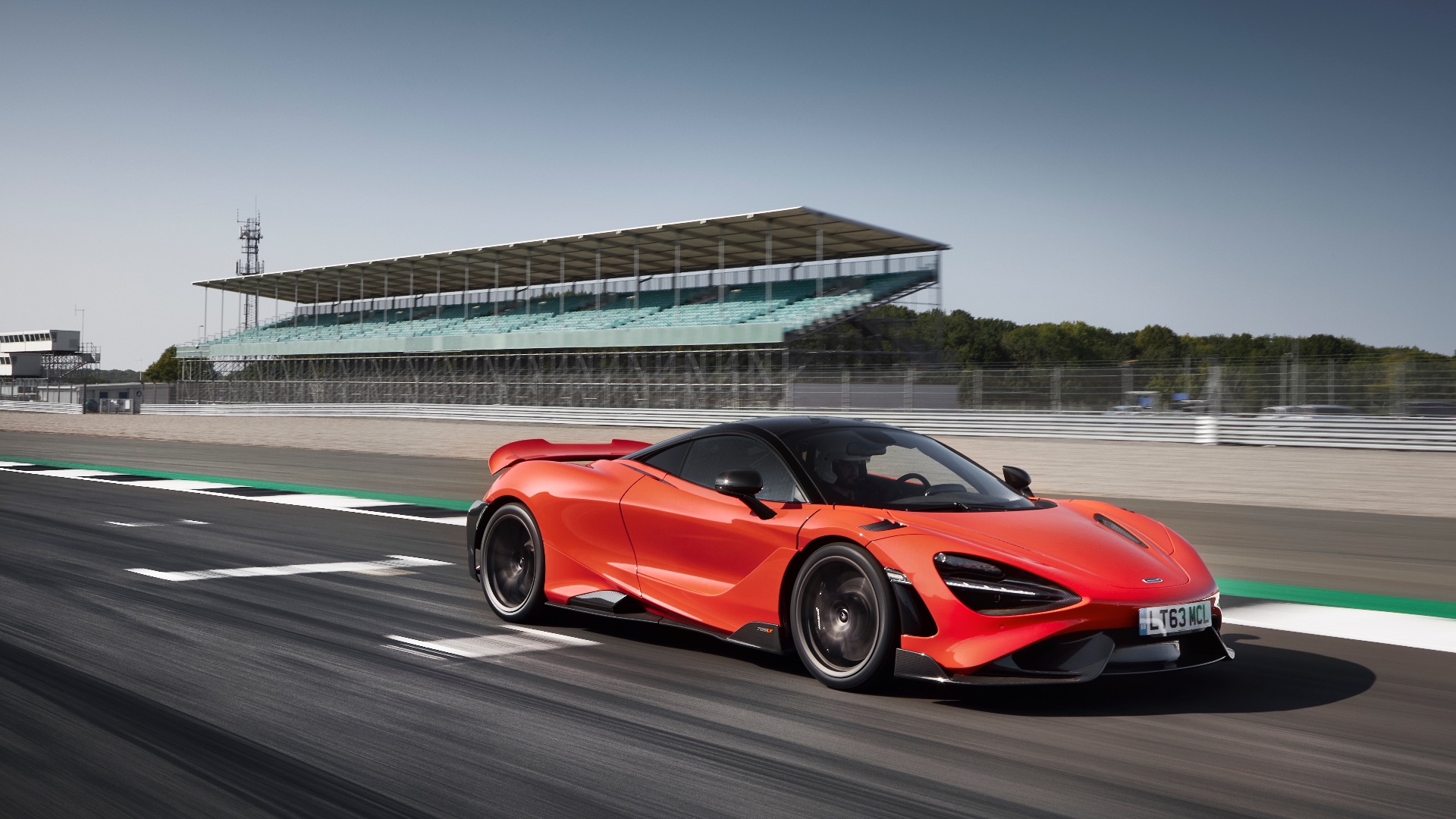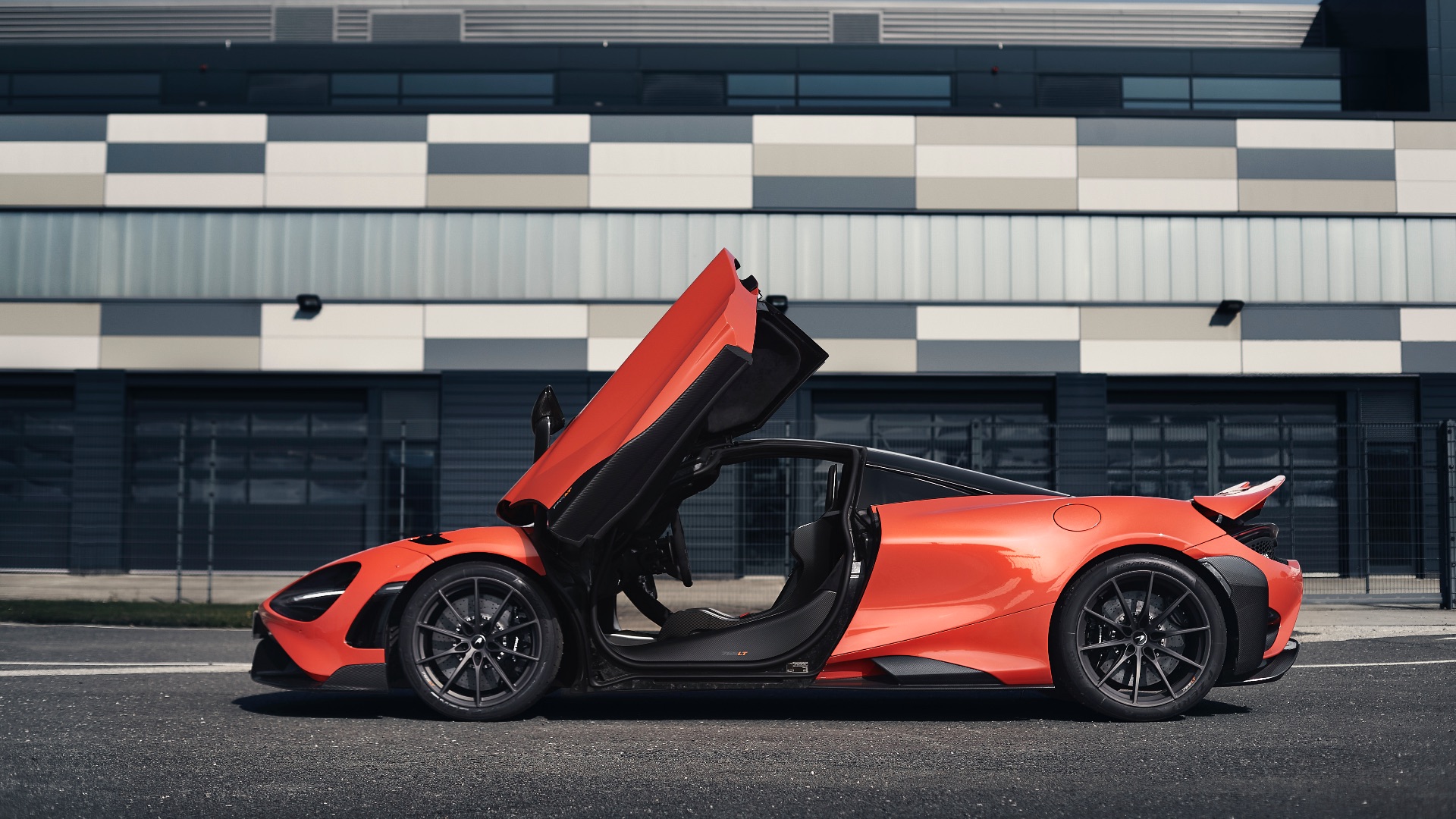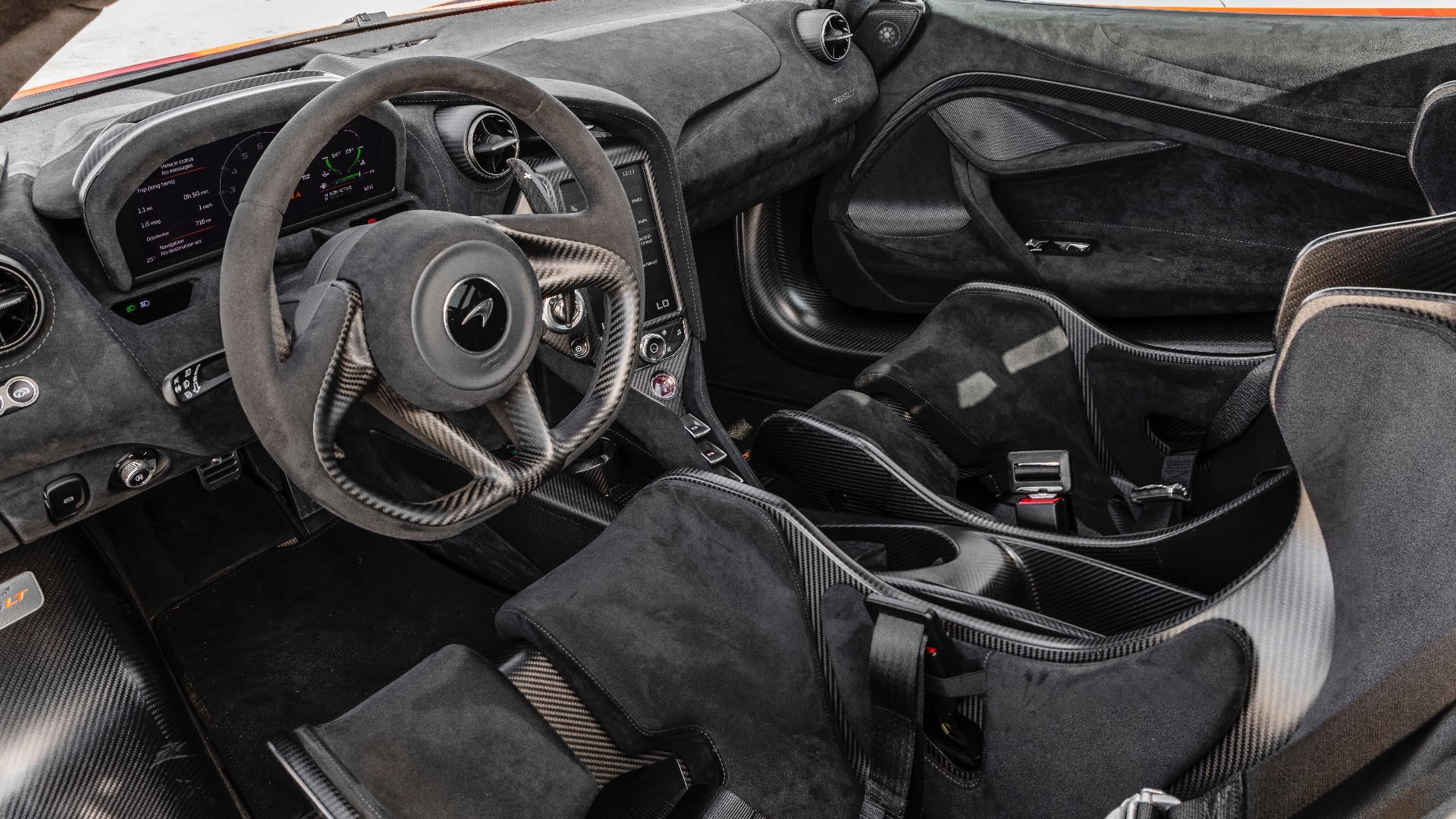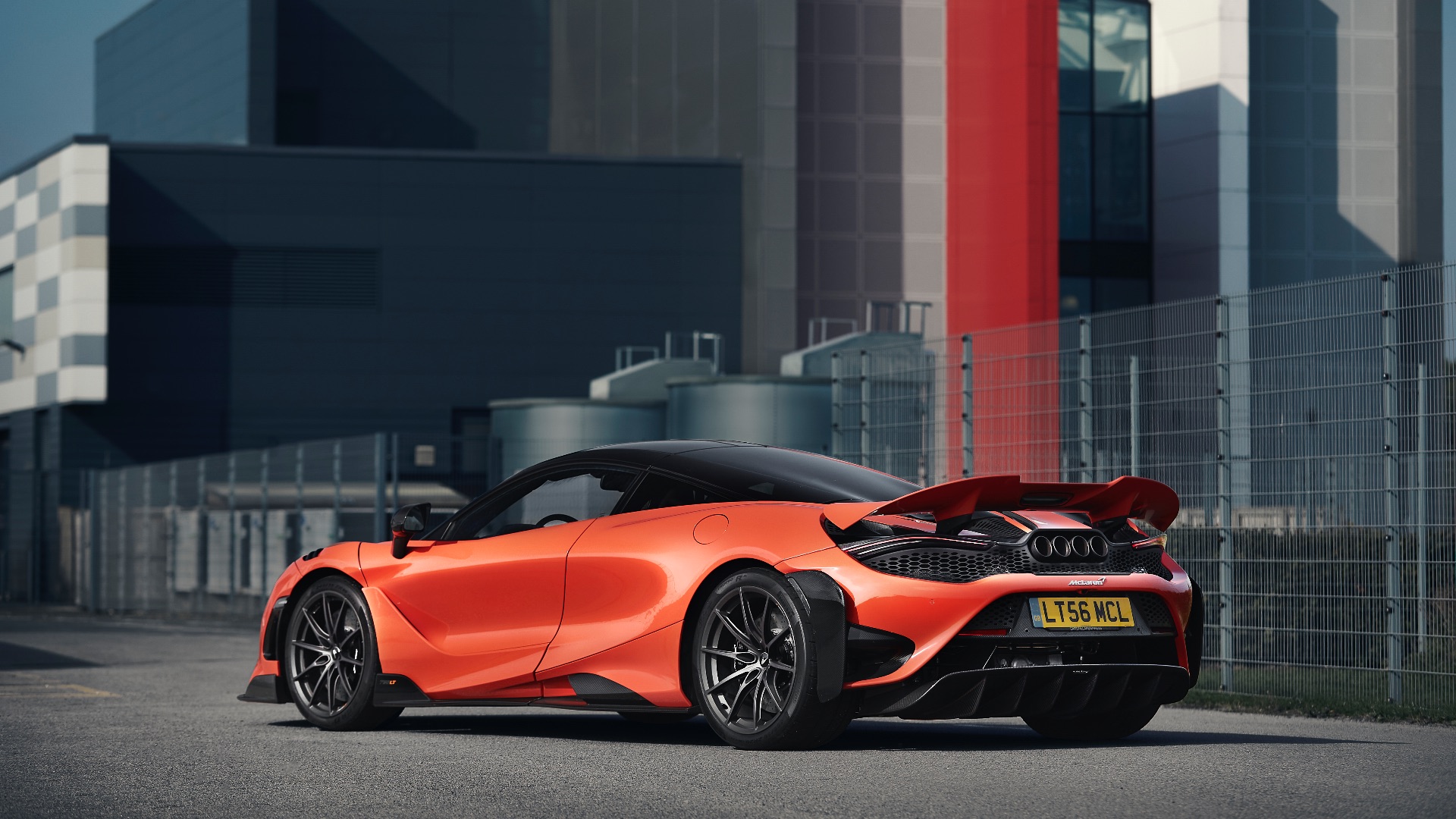
Stepping back a safe distance, Mike Flewitt takes off his face mask and bursts into a broad grin: “Well, I could hardly come to Silverstone and not have a go”.
Like me, the McLaren CEO is here for the global launch of the new 765LT. After a “horrible” year, overseeing 1,200 job cuts and the sale of McLaren’s Woking HQ, he’s exhilarated to be back (literally) in the driving seat. “I’m desperately proud of this car. Its speed is relentless, grip is tremendous. I adore it”.
The ‘Longtail’ (LT) name, first applied to racing versions of the McLaren F1, is now shorthand for track-focused supercars. The 765LT, then, is essentially a harder, faster 720S – McLaren’s answer to the Ferrari 488 Pista or any Porsche 911 with an ‘RS’ suffix.
Power rises by 45hp to 765hp, weight falls 80kg to 1,229kg without fluids. Performance? Yep, there’s plenty of that: try 0-62mph in 2.8 seconds and 0-124mph in 7.0 seconds. Only 765 examples will be built, at a likely cost of £280,000.
More power than a GT3 racer

Lurking in pit garages occupied a few weeks earlier by Lando Norris and Carlos Sainz, the 765LT bristles with mechanical malice. Its best angle is from the rear, where laser-cut mesh offers a salacious glimpse of the 4.0-litre twin-turbo V8 and seven-speed sequential gearbox.
Four titanium tailpipes, which glow burnt blue when hot, are framed by a larger pop-up spoiler/airbrake and toothy carbon fibre diffuser. Unlike previous LTs, however, most of the 57mm additional length comes from the jutting front splitter, not a longer tail.
I’m wearing a crash helmet and bulky ‘HANS device’ neck brace, but the 765LT’s upwards-opening dihedral doors cut into the roof for easier access. The sparsely-padded ‘Senna seats’ are more welcoming than they look, but air conditioning and audio systems have been binned to save weight (owners can add them back at no extra cost).
McLaren pro driver Lewis Proctor, who spends his Sundays racing a 720S GT3, clambers in alongside me. “My GT3 car is restricted to about 500hp,” he says. “This has a lot more power.”
‘Ruthless intensity’

He’s not wrong. The 765LT outguns all but the most exotic hypercars – and I’d wager it’s quicker around a track, too.
Exiting the pitlane onto the fast-flowing International circuit, the V8 erupts with a stentorian roar. It sounds stark and purposeful, rather than rich and musical, but revs like a superbike, blamming through the shortened gear ratios with ruthless intensity.
McLaren 765LT tailpipes glowing blue after hot laps at Silverstone.
— Tim Pitt (@timpitt100) September 22, 2020
This quad-exit titanium exhaust is 40 percent lighter than a stainless steel system.
Overall, the LT is 80kg lighter than a 720S. pic.twitter.com/dTLeayMoQl
If anything, how the LT stops impresses more then how it goes. Huge six-piston front calipers – also pilfered from the McLaren Senna – are one of the few areas where engineers actually added weight. Clamping carbon-ceramic discs, they offer tireless braking from three-figure speeds, lap after lap.
Factor in gooey Pirelli Trofeo R tyres (short-lived on the road, limpet-like on a track) and the G-forces are immense. I’m quietly thankful for that neck brace.
McLaren flexes its muscles

This isn’t a hold-on-and-hope rollercoaster ride, though. The McLaren’s hydraulic steering overflows with tactility and its chassis is benign and forgiving. Oversteer is there if you want it, of course, but the 765LT rewards tidy lines and accurate inputs, not heavy-footed hooliganism.
My one reservation concerns the ride, which is impossible to assess on a smooth circuit. The zen-like body control of the 720S is largely what makes it so daily-usable. This, I suspect, will be more of a weekend toy.
The 765LT sees Woking flexing its muscles and playing to its strengths. What comes next will be very different: a new V6 hybrid platform designed to halve fleet CO2 emissions.
As Mike reminds me, though, McLaren pioneered performance hybrids with the P1 in 2012. Don’t bet against it raising the game again.
Price: £280,000 (est.)
0-62mph: 2.8 seconds
Top speed: 205mph
CO2 emissions: 205g/km
Fuel economy: 23.0mpg
ALSO READ
McLaren and Gulf Oil reunite on road and track
[…] hard from 170mph on the Hangar Straight, another McLaren 765LT looms large in my mirrors. Two corners later, it’s almost nudging my diffuser. Admitting defeat, […]
[…] hard from 170mph on the Hangar Straight, another McLaren 765LT looms large in my mirrors. Two corners later, it’s almost nudging my diffuser. Admitting defeat, […]